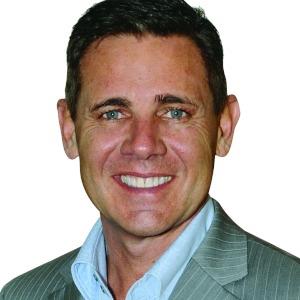SMSFs have had a wild ride since they were launched in 1994 with little fanfare and to a great deal of amusement from employer and retail superannuation funds.
Whoever thought in those days that small four-member super funds – now known as SMSFs – would become the lion of superannuation. Certainly not Paul Keating or the Labor government of the day – they were pretty chuffed with themselves for introducing the super guarantee charge and giving industry super funds a leg up.
In the first few years, not much really happened in the SMSF world. A lot of accountants used them to acquire business property and even business assets such as computers, desks, partitions and cars in order to lease these assets back to a related-party business.
But the hottest strategy of the time was the use of a 100 per cent-owned unit trust – a related trust to borrow and acquire property and other assets. This was put on hold in 1998 when the in-house assets test was changed to include related-party lease arrangements and related trusts.
At that time, there was only $48 billion in SMSFs and against the ever-growing retail and industry super funds, no one paid SMSFs much notice. Bit of a joke really, and with the hottest strategies sidelined by the changes to the in-house assets test, most commentators expected them to die.
In fact, many accountants were suggesting to clients that they wind up their funds and transfer the monies into a retail super fund because of their expense. It was not unheard of for administration expenses to be more than $3,000 and even audits to cost $1,000-plus – and that was in 1990s dollars.
And with the Wallis Inquiry in 1997 recommending the government switch the regulator to the ATO from APRA, SMSFs were a bit on the nose. Only the most optimistic and ardent commentators and lovers of SMSFs could see what the future held – and as the saying goes, build it and they will come.
Unlike the earlier "war generation" – who did not have huge amounts of superannuation – the baby boomer generation were better off super-wise. As baby boomers approached retirement, they were prone to boost their super by salary sacrificing and making non-deductible contributions.
Also, with greater financial and general education, baby boomers looked for a super scheme that fitted their needs rather than relying on faceless fund managers. This was borne out by an ASX qualitative survey in 2003 that looked at why superannuation members were suddenly deserting retail and industry superannuation funds to head to SMSF world. The key reasons were:
- Control and choice of investment in super
- Taxation benefits
- Poor performance of retail super funds and high fees
- Media awareness of SMSFs
- Ability to do better in terms of performance
But there were still roadblocks to contend with. When the Corporations Act 2001 brought SMSFs into the realm of financial products, requiring any person recommending an SMSF or things to do with an SMSF – such as making a contribution, commencing a pension, taking a lump sum or advising on estate planning – to have a licence or act as an authorised representative of an AFSL, things were not rosy.
Of course, there was the carve-out for accountants, which provided this diverse group of professionals an incentive to continue recommending SMSFs, but a roadblock is still a roadblock. And with reasonable benefit limits and a whole lot of other restrictions on super, it was no wonder we did not see baby boomers flock to SMSFs en masse.
In July 2004, total assets in SMSFs were sitting at $124 billion and 280,000 funds – fair growth, but still not troubling the majors.
Then came the big shock that put SMSFs on steroids: in May 2006, then-Treasurer Peter Costello dropped the biggest bombshell to hit the financial services industry and even the economy – lump sums and pensions taken by a member after 60 and death benefits paid to a spouse on the death of a member were to be tax-free.
And with the continuation of the low 15 per cent income tax on accumulation assets in a fund and a tax exemption on pension assets, plus the abolition of reasonable benefits, the game was on. SMSFs went from a poor cousin to the young lion in the room – particularly with the generous $1 million, transitional non-concessional contribution cap that applied from 30 June 2007.
From the date of the Costello announcement, when SMSFs weighed in at $170 billion, they grew to a staggering $314 billion some 13 months later.
And here we are, eight years later, with more than $600 billion in SMSF assets compared to retail super at $540 billion and industry super funds at $485 billion.
Based on current growth trends, SMSFs will hit $1 trillion in assets by 2020. They are now a powerhouse that invest wholly in Australia, have changed public company dividend policies (courtesy of franking) and are getting serious momentum from the under 50-year-olds. With that group having in excess of $700 billion in retail and industry superannuation, SMSFs can only grow and grow.
For any person, even with a fringe involvement in SMSFs, a great future is assured. There will be changes in the future, and knowing super, probably next week and the week after that – but for the next few years there is clear air thanks to the Coalition government, despite all the non-SMSF interests seeking to tax superannuation more.
With strategy automation, administration and audit costs getting lower and cloud computing dropping the entry amount for the funds, it is time to enjoy this golden age of SMSFs.
ABOUT THE AUTHOR

Grant Abbott
Grant Abbott is the principal of NowInfinity, an SMSF management platform for advisers and accountants.







You are not authorised to post comments.
Comments will undergo moderation before they get published.